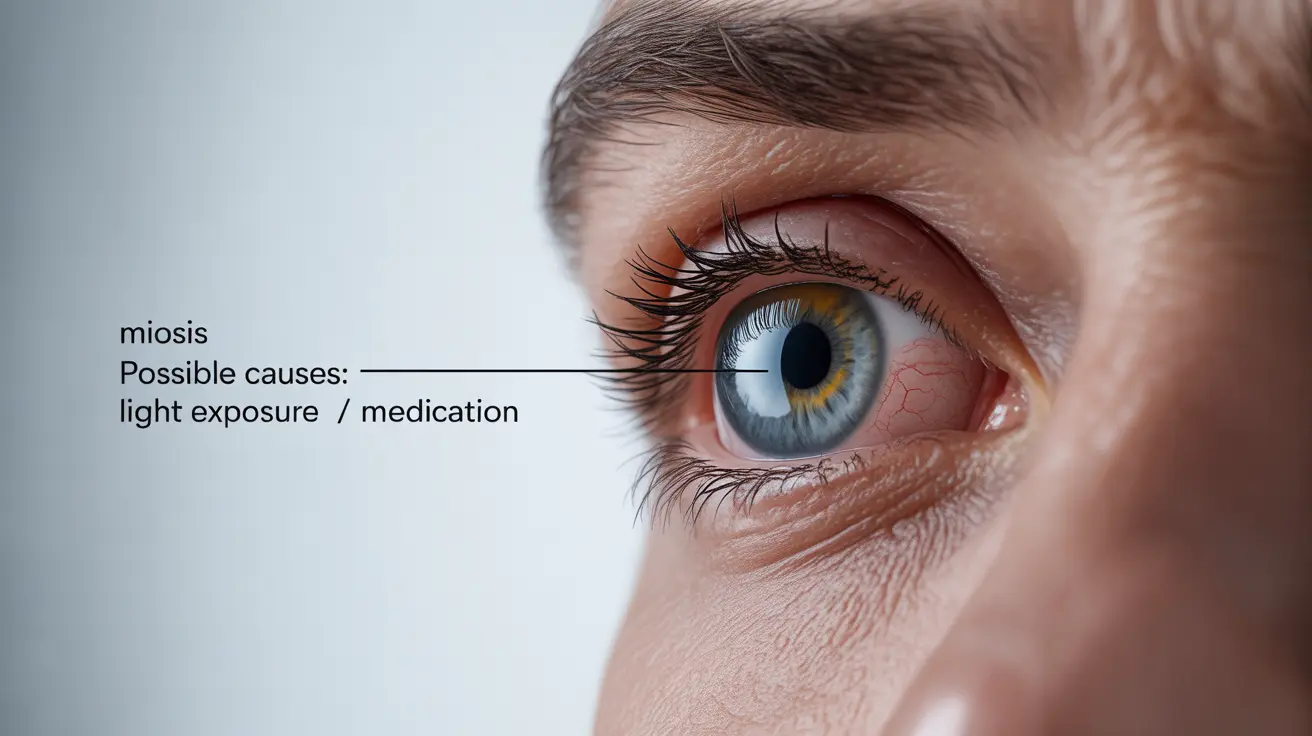Miosis, a medical condition characterized by abnormally constricted or small pupils, can be an important indicator of various underlying health conditions or medication effects. While some causes of miosis are benign, others may signal serious medical concerns that require immediate attention. Understanding this condition is crucial for recognizing when to seek medical help and managing potential complications.
This comprehensive guide explores the various aspects of miosis, including its causes, associated symptoms, diagnostic approaches, and available treatments. Whether you're experiencing miosis yourself or seeking information for someone else, this article will help you better understand this important eye condition.
Common Causes of Miosis
Miosis can occur due to various factors, ranging from normal physiological responses to serious medical conditions. Here are the primary causes:
Physiological Causes
The most common natural causes of miosis include:
- Exposure to bright light
- Normal aging process
- Sleep-wake cycle changes
- Close-range focus activities
Medication-Related Causes
Several medications can trigger miosis as a side effect:
- Opioid pain medications
- Certain eye drops
- Anti-hypertensive medications
- Some antipsychotic drugs
Medical Conditions
Various health conditions may lead to miosis:
- Horner's syndrome
- Brain injuries or tumors
- Inflammation of the eye
- Certain neurological disorders
Diagnosis and Assessment
Healthcare providers typically follow a systematic approach to diagnose the underlying cause of miosis:
Physical Examination
The initial assessment usually includes:
- Detailed eye examination
- Pupillary light reflex testing
- Visual acuity assessment
- Neurological evaluation
Additional Testing
Depending on symptoms, doctors may recommend:
- Brain imaging (CT or MRI)
- Blood tests
- Pharmacological testing
- Specialized eye examinations
Treatment Approaches
Treatment for miosis primarily focuses on addressing the underlying cause rather than the pupil constriction itself.
Medical Interventions
Treatment options may include:
- Adjusting or discontinuing causative medications
- Managing underlying neurological conditions
- Treating inflammatory conditions
- Addressing any associated eye problems
Long-term Management
Long-term care strategies often involve:
- Regular eye examinations
- Medication adjustments as needed
- Monitoring for complications
- Lifestyle modifications
Frequently Asked Questions
What are the most common causes of miosis (abnormally small pupils)?
The most common causes of miosis include medication side effects (particularly from opioids), exposure to bright light, aging, and certain neurological conditions like Horner's syndrome. Some people may also experience miosis as part of their natural sleep-wake cycle.
How can medications or drugs lead to miosis and what should I do if this happens?
Medications, especially opioids and certain eye drops, can cause miosis by affecting the muscles that control pupil size. If you experience medication-related miosis, don't stop taking your medications without consulting your healthcare provider. They can evaluate whether dosage adjustment or medication changes are necessary.
What symptoms or signs alongside miosis indicate a serious neurological condition?
Warning signs include sudden onset of severe headache, vision changes, facial drooping, weakness on one side of the body, or changes in consciousness. If you experience these symptoms alongside miosis, seek immediate medical attention as they could indicate a serious neurological condition.
How is miosis diagnosed and what treatments are available for underlying causes?
Diagnosis typically involves a comprehensive eye examination, neurological assessment, and possibly imaging studies. Treatment depends on the underlying cause and may include medication adjustments, managing neurological conditions, or addressing inflammatory issues affecting the eye.
Can miosis affect my vision or eye health long-term, and how does aging contribute to it?
While miosis itself rarely causes permanent vision problems, the underlying conditions causing it might affect vision. Aging naturally leads to smaller pupil size and reduced pupil response, but this gradual change usually doesn't significantly impact vision. Regular eye check-ups can help monitor any potential long-term effects.




